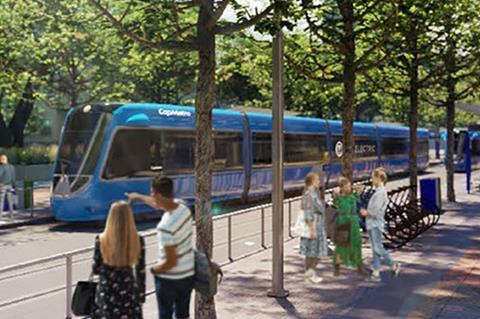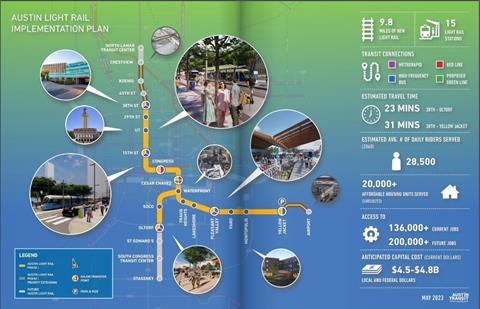
USA: The proposed route for a Y-shaped light rail network has been published by the Austin Transit Partnership, a local government corporation established by the City of Austin and transport agency Capital Metro to improve public transport in the Texan state capital.
In a revision to plans approved by the Texas state legislature in May 2021, the 15·7 km network would run from 38th Street to Yellow Jacket, with a branch to Oltorf. The double-track, street-running line with 15 stops would cross Lady Bird Lake at Trinity Street; plans for tunnelled sections through the city centre are not being taken forward under the initial phase.

ATP said its preferred option was the most balanced between north, east and south Austin. It would connect historically underserved communities to the east and areas expected to generate high ridership in the south and north, including the University of Texas. It would also serve locations that already have high public transport use.
Daily ridership is estimated at 28 500 by 2040.
The capital cost of the project is put at $4·5bn to $4·8bn, with 50% federal funding envisaged and local contributions from a property tax.
Subsequent phases could extend the network from all three initial termini; the priorities would be Yellow Jacket to the city’s airport and 38th Street to Crestview, followed by Crestview to North Lamar Transit Center and Oltorf to Stassney.
ATP Executive Director Greg Canally said the aim is ‘create a transit network that propels Austin toward becoming a city that is more affordable and connected’, and the preferred route was selected from the five options studied as it ‘best reflects the needs and values of the Austin community and lays the best foundation for future expansions and extensions in all three directions’.
Austin does not currently have any urban rail provision, although the city is served by Capital Metro’s Red Line which covers a 52 km route between the city centre and Leander. Much of this is shared with freight traffic, and trains operate at 30-60 min headways using a fleet of Stadler GTW 2/6 diesel multiple-units.
Mayor Kirk Watson said Austin had been trying to develop a light rail system for more than 20 years. ‘When we come together to solve big problems, we can do big things’, he said, ‘and having a light rail system that is equitable, reliable and affordable that is built by the people of Austin, is the definition of a big thing’.



